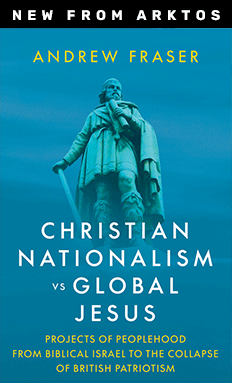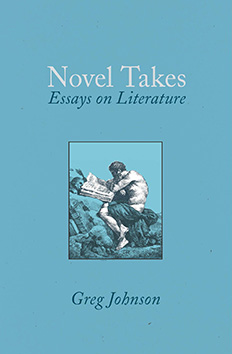Behind Biden’s 2020 Victory
Ruth Igelnik et al., Pew Research Center, June 30, 2021
The 2020 presidential election was historic in many ways. Amid a global pandemic, with unprecedented changes in how Americans voted, voter turnout rose 7 percentage points over 2016, resulting in a total of 66% of U.S. adult citizens casting a ballot in the 2020 election. Joe Biden defeated Donald Trump 306-232 in the Electoral College and had a 4-point margin in the popular vote. {snip}
A new analysis of validated 2020 voters from Pew Research Center’s American Trends Panel examines change and continuity in the electorate, both of which contributed to Biden’s victory. It looks at how new voters and voters who turned out in one or both previous elections voted in the 2020 presidential election and offers a detailed portrait of the demographic composition and vote choices of the 2020 electorate. It also provides a comparison with findings from our previous studies of the 2016 and 2018 electorates.
{snip}
The 2020 election featured continuity in the voting patterns of major demographic and political groups in the population, but there were a few important shifts. The gender gap in the 2020 election was narrower than it had been in 2016 as Democrats made gains among men and Republicans made gains among women. In the 2016 election, Donald Trump won men by 11 percentage points (52% to 41%) while Hillary Clinton won women by 15 points (54% to 39%). In the 2018 election, Democrats substantially narrowed the gap with men (50% of men voted for Democratic candidates, 48% for Republican candidates) while maintaining an 18-point lead among women. In the 2020 election, men again divided nearly evenly (50% Trump, 48% Biden), while Biden’s advantage narrowed to 11 points among women (55% to 44%).
Similarly, as Biden increased his level of support among White men in the 2020 election relative to Clinton’s in 2016, Trump gained among White women, which had the effect of further narrowing the gender gap among White voters. In 2016, Trump won White men by 30 points (62% to 32%). That gap narrowed to a 17-point margin for Trump in 2020 (57% to 40%). White women, a group sometimes categorized as swing voters and who broke nearly evenly in 2016 (47% for Trump to 45% for Clinton), favored him in 2020 (53% to 46%).
Biden received the support of 92% of Black voters, nearly the same as Clinton received in 2016 and Democratic candidates for the U.S. House received in 2018.
While Biden took a 59% majority of the Hispanic vote, Trump (with 38%) gained significantly over the level of support Republican candidates for the House received in 2018 (25%). To be sure, Hispanic voters are not a monolith; there is substantial diversity within the Hispanic electorate.
One noteworthy feature of the 2020 election was the wide education gap among Hispanic voters. In 2020, Biden won college-educated Hispanic voters 69% to 30%. At the same time, Biden’s advantage over Trump among Hispanic voters who did not have a college degree was far narrower (55% to 41%).
One of the most pivotal groups in the 2016 election was White voters without a four-year college degree, who were critical to Trump’s electoral college victory that year (nationally, he won them by a wide 36-point margin in 2016, 64% to 28%). Prior to 2016, differences in candidate preferences by education were typically much smaller than they were that year. In 2020, Trump won 65% of White non-college voters – nearly identical to his 2016 share – even as Biden outperformed Clinton among this group (33% of White non-college voters backed Biden, up from the 28% of this group Clinton won in 2016). At the same time, White voters with a college degree or higher supported Biden by roughly the same margin they had backed Clinton in 2016.
Trump’s stronghold among White men without a four-year college degree loosened somewhat in 2020. While he still won this group by a little more than two-to one (66% to Biden’s 31%), that 35 percentage point gap is notably smaller than the 50-point gap in the 2016 election, when 73% of White men without a college degree supported Trump, compared with 23% who supported Clinton. Meanwhile, White men with a four-year college degree have become increasingly supportive of Democratic candidates, breaking close to evenly in 2016 (47% for Clinton, 44% for Trump) but supporting Biden by a 10-point margin in 2020.
At the same time, Trump’s vote share among White women without a college degree grew slightly between the 2016 and 2020 presidential elections. In 2016, White, non-college women supported Trump by a margin of 56% to 33%. By 2020, Trump’s vote share rose to 64% among this group compared with 35% supporting Biden. Among white women with a college degree, support for Biden was on par with support for Clinton in 2016 (59%-40% in 2020).
{snip}
The political split between America’s rural areas and its suburban and urban locales remained substantial in 2020. Biden did considerably better among suburban voters in 2020 than Clinton did in 2016 (54% for Biden, 45% for Clinton). By contrast, Trump garnered the support of 65% of rural voters, including 71% of White rural voters; the latter represented an increase over the 62% he received among this group in 2016. Biden received a solid majority of votes among urban residents (66% overall), but Trump gained among urbanites relative to his performance in 2016 (33% in 2020, 24% in 2016).
{snip}
Voters in 2020 sorted along religious lines in ways consistent with recent elections. Protestants constituted nearly half of all voters (46%), as they did in 2016. Within the Protestant tradition, White evangelicals accounted for 19% of all voters, but a much higher share of Trump’s voters (34%). Without such broad support for Trump among White evangelicals, Biden would have beaten him by more than 20 points.
White non-evangelical Protestants voted for Trump over Biden by a 14-point margin (57%-43%), while Black Protestants were an overwhelmingly Democratic group (91% voted for Biden).
Biden, by contrast, drew strong support from religiously unaffiliated voters – atheists, agnostics, and those who say their religion is “nothing in particular.” Together, these voters made up 25% of voters, which is a slightly larger share of the total electorate than White evangelicals (19%). But support for Biden among the unaffiliated was not quite as lopsided as Trump’s support among White evangelicals (a 45-point margin for Biden among the unaffiliated vs. a 69-point margin for Trump among White evangelicals). Without the religiously unaffiliated, Trump would have had a 9-point popular vote margin over Biden.
White non-Hispanic Catholics were more supportive of Biden (at 42%) than they had been of Clinton in 2016 (31%), but Trump still captured a solid majority of their votes (57%). White Catholics made up 14% of all voters.
{snip}
As was the case in the 2016 and 2018 elections, the Democratic voting coalition in 2020 looked quite different from the Republican coalition in several respects. Overall, Biden voters were younger, more racially and ethnically diverse, and less likely to live in rural areas than Trump voters.
In 2020, 85% of voters who cast a ballot for Trump were White non-Hispanic; this compares with just 61% of Biden voters. These differences are roughly consistent with the share of White voters in each party’s coalition in 2016.
Nearly two-in-ten voters who cast a ballot for Biden in the 2020 election (19%) were Black, identical to the share of Clinton voters in 2016 who were Black. That is significantly higher than the share of Trump voters who were Black (2%).
The community profiles of Trump and Biden voters are similar in some fundamental ways to the previous two elections – but more voters who cast ballots for Biden in 2020 say they live in a suburban area compared with Clinton’s 2016 voters.
Overall, urban voters continue to constitute a larger share of the Democratic coalition compared with the Republican coalition. And rural voters remain a significantly larger portion of the Republican electorate.
However, when comparing Clinton’s voters with Biden’s, there are some significant shifts. In 2016, about half of Clinton’s voters described their communities as suburban (48%), while 32% said they were from an urban area and 19% were from a rural area.
In 2020, suburban voters made up a majority of Biden’s coalition (55%); 28% of his voters said they lived in urban areas and 17% were from rural areas.
In 2020, 31% of Trump voters had at least a four-year college degree – similar to the share of Trump voters who had a college degree in 2016. Far more Trump voters (roughly 70% in each presidential election) did not have a four-year college degree.
The Democratic electorate is more evenly divided when it comes to education. In 2020, 46% of Biden voters had at least a college degree; 53% did not have a degree.
As was the case in 2016, White voters without a four-year college degree made up a considerably larger share of GOP voters (58%) than Democratic voters (27%). At the same time, White voters with a college degree made up a larger share of Biden voters (34%) than Trump voters (27%).
In 2020, the age profiles of Democratic and Republican voters looked largely similar to 2016. Younger adults continue to make up a larger share of Democratic voters compared with Republican voters. For example, in 2020, nearly half of Biden voters (49%) were younger than 50; that compares with 39% of Trump voters in 2020.
Protestants made up a majority of those voting Republican in 2020, just as they did in 2016. Overall, 58% of Trump voters were Protestant, compared with just 35% of Biden voters. White evangelical Protestants, in particular, remained a critical part of the Republican voting coalition, making up 34% of Trump’s voters but just 6% of Biden’s.
Catholics made up similar shares of Biden and Trump voters (19% and 22%, respectively); in 2016, Catholics made up a slightly higher share of Trump voters compared with Clinton voters (23% vs. 18%). Voters who were unaffiliated with any religious tradition (atheists, agnostics and those who describe themselves as “nothing in particular”) made up 35% of Biden voters but just 14% of Trump voters in 2020.
{snip}















